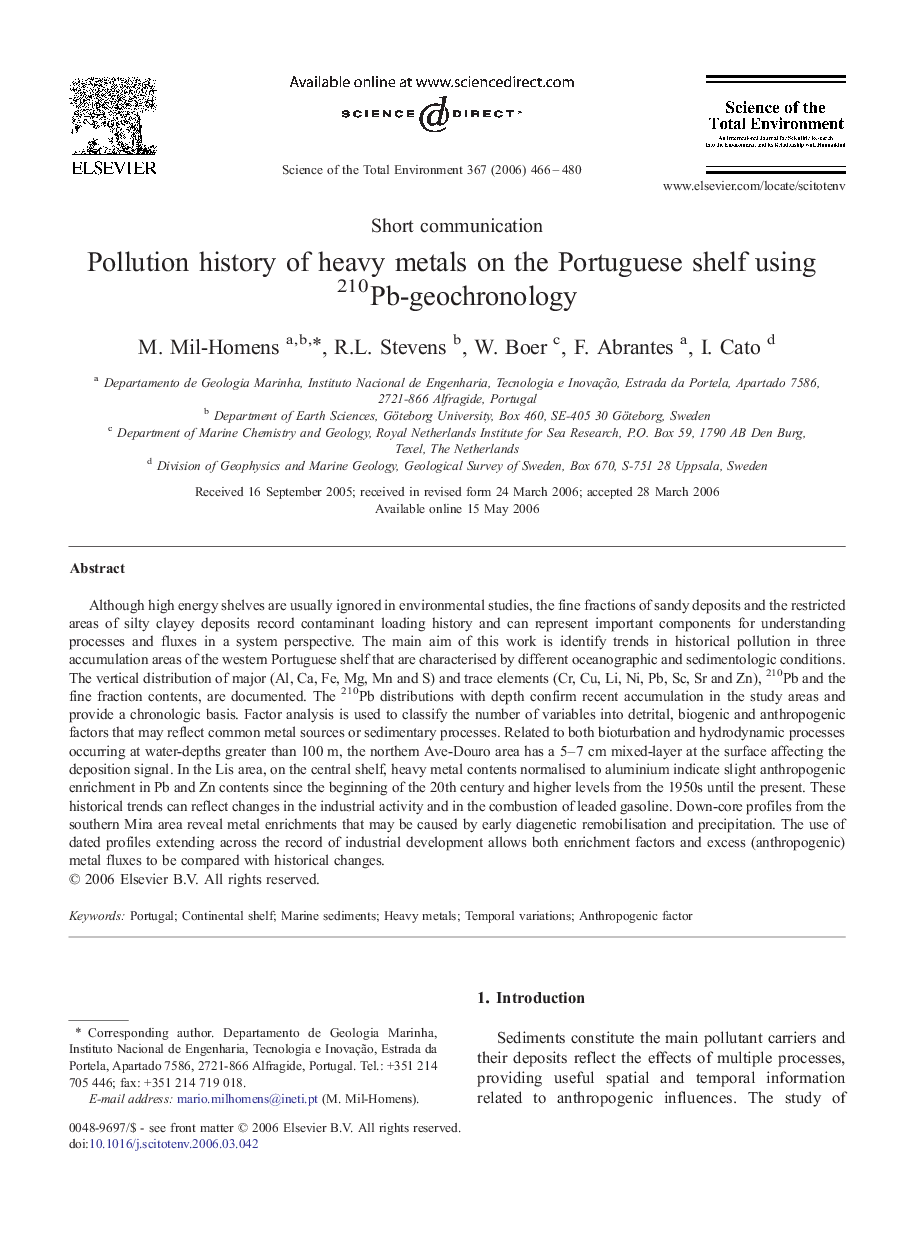| Article ID | Journal | Published Year | Pages | File Type |
|---|---|---|---|---|
| 4434020 | Science of The Total Environment | 2006 | 15 Pages |
Although high energy shelves are usually ignored in environmental studies, the fine fractions of sandy deposits and the restricted areas of silty clayey deposits record contaminant loading history and can represent important components for understanding processes and fluxes in a system perspective. The main aim of this work is identify trends in historical pollution in three accumulation areas of the western Portuguese shelf that are characterised by different oceanographic and sedimentologic conditions. The vertical distribution of major (Al, Ca, Fe, Mg, Mn and S) and trace elements (Cr, Cu, Li, Ni, Pb, Sc, Sr and Zn), 210Pb and the fine fraction contents, are documented. The 210Pb distributions with depth confirm recent accumulation in the study areas and provide a chronologic basis. Factor analysis is used to classify the number of variables into detrital, biogenic and anthropogenic factors that may reflect common metal sources or sedimentary processes. Related to both bioturbation and hydrodynamic processes occurring at water-depths greater than 100 m, the northern Ave-Douro area has a 5–7 cm mixed-layer at the surface affecting the deposition signal. In the Lis area, on the central shelf, heavy metal contents normalised to aluminium indicate slight anthropogenic enrichment in Pb and Zn contents since the beginning of the 20th century and higher levels from the 1950s until the present. These historical trends can reflect changes in the industrial activity and in the combustion of leaded gasoline. Down-core profiles from the southern Mira area reveal metal enrichments that may be caused by early diagenetic remobilisation and precipitation. The use of dated profiles extending across the record of industrial development allows both enrichment factors and excess (anthropogenic) metal fluxes to be compared with historical changes.
